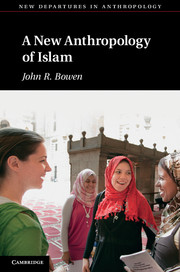Book contents
3 - Perfecting piety through worship
Published online by Cambridge University Press: 05 December 2012
Summary
Although Islam means “submission,” Muslims do more than simply carry out what God has ordered them to do. In daily prayers or worship, in special observances on feast days, and in ways of dressing and speaking, Muslims develop a variety of ways to relate to the divine. They do so, however, on the basis of a widely shared set of ritual templates. Here is the apparent paradox that we encounter time and again in the study of Islam: that even as Muslims align globally around their major obligations – to pray, to sacrifice, to carry out the pilgrimage to Mecca – they also exercise choice and creativity in how they understand and carry out those rituals. From these opportunities for selection and creativity comes the observable diversity of religious lives within and across Muslim social worlds. In choosing how to formulate prayers, how to venerate saints, and how to dress for everyday life, Muslims are engaged in religious creativity, and in ways that challenge some conventional Western theoretical understandings of freedom, agency, and choice.
Submission through salat
Even if you do not know the word, you are already familiar with salat (salâh), the basic act of worship in Islam. Several times daily, and particularly at midday on Friday, Muslims will recite, kneel, bow, and bend toward Mecca to fulfill one of their obligations to God. In the United States, newspaper editors seeking an illustration for a story about the Middle East routinely pull from their files a photograph of large numbers of Muslims prostrating themselves. (Often these photographs are irrelevant to the accompanying story, perhaps added to make Muslims seem exotic or threatening.)
- Type
- Chapter
- Information
- A New Anthropology of Islam , pp. 42 - 74Publisher: Cambridge University PressPrint publication year: 2012

